Situation
Background
I joined the KUTARI app project, inspired by the urgent need to empower Indigenous communities in the Amazon to protect their ancestral lands. These communities face constant threats from illegal activities like deforestation, mining, and land grabbing. Recognizing the limitations of traditional monitoring methods, we envisioned an innovative solution that would put the power of technology directly into the hands of Indigenous peoples. The core idea was to develop a user-friendly mobile application that would enable real-time monitoring of their territories, allowing for rapid response to threats. Through extensive research and collaboration with Indigenous leaders, we discovered that the app needed to go beyond simple alerts. It must also serve as a platform for knowledge sharing, community building, and the exchange of best practices for territorial protection. This collaborative approach ensures that KUTARI truly meets the unique needs and priorities of the Indigenous communities it serves.
Goals
Creation of a user-friendly platform - an app and a dashboard - that allows the user to obtain or save data from native peoples. The app integrates features that support the monitoring and management of local resources, such as traditional knowledge databases and tools for tracking environmental changes and threats.
Problem
Given the equal importance of protecting both intangible assets like subjectivity and traditional knowledge and tangible assets like land, how can we develop digital tools that are sensitive to the needs and perspectives of diverse Amazonian communities, enabling us to collect meaningful data?
My Impact
As a brand and UX/UI designer, I led this project from concept validation to final MVP delivery, utilizing research data to inform every step.
Tasks
Research
Below are the areas the team would like to explore during the user research.
We want to understand:
We want to understand:
• What kind of data a user can or need to collect;
• If any native community member can understand the app;
• The context in which the users collect data from the territory;
• The management of information collected on site.
• If any native community member can understand the app;
• The context in which the users collect data from the territory;
• The management of information collected on site.
Methodologies:
Secondary research on other products related to indigenous data collect to ensure the safety of Indigenous defenders and territories, raise social awareness, provide assistance during emergencies, publicize indigenous initiatives, protect socio-territorial rights, provide legal support for crimes and attacks, and monitor public policies. In-depth user interviews with 3 members of native peoples related to this project.
User Interviews
The user interviews revealed a deep-seated desire among Indigenous communities to actively participate in the protection of their ancestral lands. Participants emphasized the need for a tool that empowers them to collect data, report illegal activities, and advocate for their rights. Key findings underscored the importance of: (1) providing Indigenous communities with the tools and knowledge to effectively monitor their territories; (2) facilitating direct communication and collaboration between communities and relevant authorities; and (3) ensuring that the platform reflects the unique needs and priorities of each community. These insights will guide the ongoing development of KUTARI, ensuring it becomes a truly impactful tool for Indigenous-led conservation efforts.
Define
User Persona:
After compiling the research outtakes, I usually create an affinity map to develop a voice identity for a project. But how to synthesize only one persona to a group of native peoples from a vast territory, with language and inhabits so diverse?
During user interviews, the term 'parente' (meaning 'relative' in portuguese) emerged frequently. While used to refer to family members, within Indigenous communities, 'parente' often carries a broader meaning, encompassing a sense of kinship and belonging beyond immediate family ties. This observation highlighted the importance of acknowledging the diverse and nuanced social structures within Indigenous communities. Rather than defining a single, universal user persona, we recognized the need to adopt a more inclusive approach that respects the unique social dynamics and cultural nuances within each community.
User Scenario:
This research effectively summarizes the key findings from the user interviews and outlines how these necessities will be used to improve the development of KUTARI. It also emphasizes the importance of empowering indigenous communities and respecting their unique needs and perspectives.
Ideation
Feature Prioritization:
After realizing what solution would bring the most value to my users, I decided to take it a step further and brainstorm ideas for the actual features. I want the app to be easy to use on the go while working out - it requires an easy interface, streamlined onboarding, and access to the main feature. The research part provided me with enough info to determine which features will bring low vs. high value to the user.
Insights
Tasks Flow
After having defined the features of the app, I created flows for the main tasks.
User Flow:
Launch the app to see all features and go onboarding.
This user flow assumes the user is using the app for the first time:
This user flow assumes the user is using the app for the first time:
App Navigation:
Based on the user flow, task flows and feature roadmap, I designed the simple app map that’s functional and easy to navigate.
Actions
Lo-fi Wireframes
The first version of lo-fi wireframes allowed me to run early usability tests and discover the priority revisions that need to be implemented ASAP. That decreased the number of iterations to the later versions with all effort being put into creating the hi-fi interface.
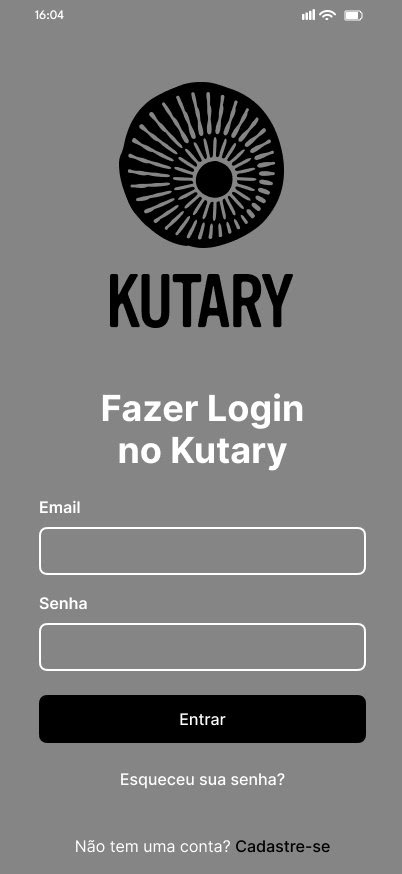
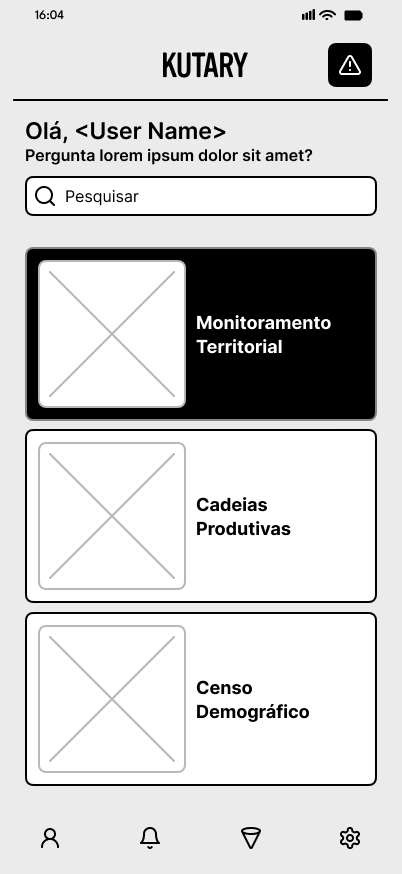

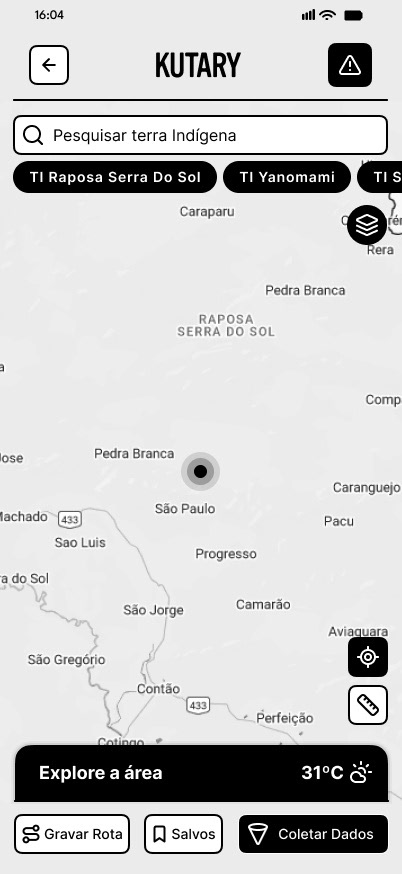
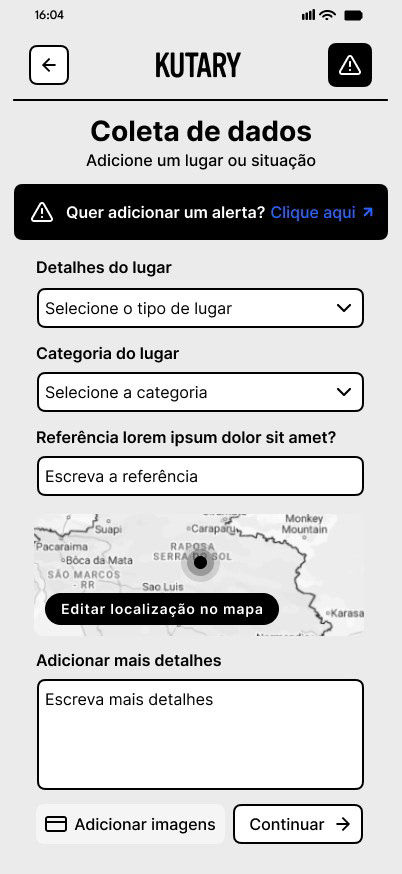
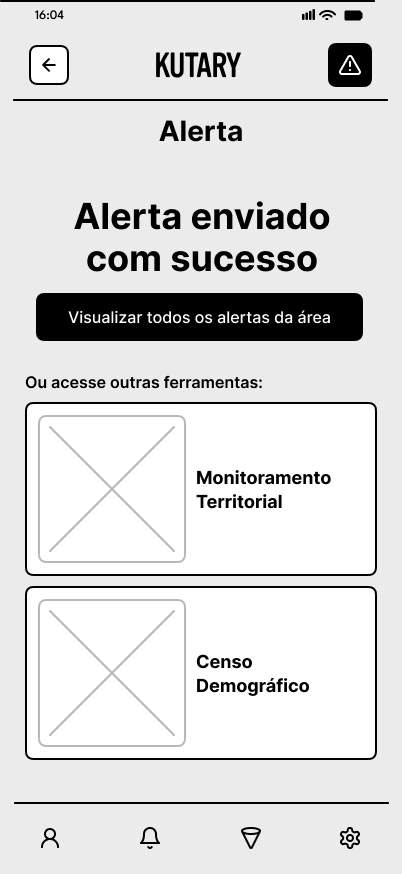
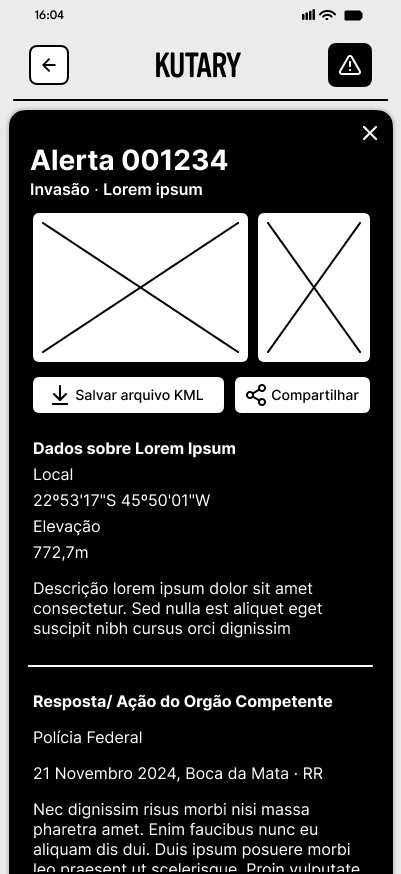
Brand Guidelines
I created the UI kit that reflects KUTARI brand adjectives. The selected logo option is a native hand-drawn style of a traditional kutari from a top point of view.
Mockups & Prototype
Results & Outcomes
The development of KUTARI has been an iterative process, emphasizing the importance of listening to and learning from the Indigenous communities we serve. Our initial vision for the app evolved significantly as we engaged with community members and gained a deeper understanding of their unique needs and priorities. We learned to prioritize their voices and adapt our approach to ensure that KUTARI truly addresses the critical challenges they face in protecting their lands. This collaborative approach has resulted in a robust and user-centric application that empowers Indigenous communities to monitor their territories, respond to threats, and contribute to the conservation of their ancestral lands. With strong support from stakeholders and a commitment to ongoing community engagement, we are confident that KUTARI will have a significant positive impact on the lives of Indigenous peoples in the Amazon.
This MVP is approved and currently, under development. COIAB stakeholders are securing funds for it the next phase: dashboard and data visualization refinements.


